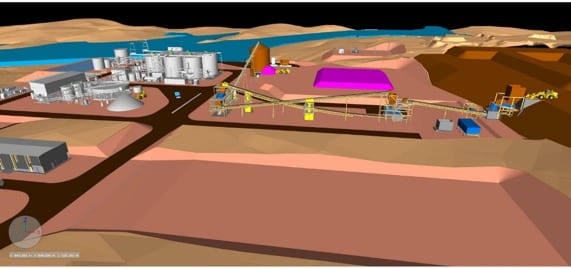Study Significantly Improves Borborema Project CAPEX
A review Big River Gold Ltd’s (ASX: BRV) Definitive Feasibility Study (DFS) for the Borborema Project in Brazil has further de-risked the operation and provided substantial improvement to the project economics.
Start-up capital costs of the 2Mtpa Project have been reduced to US$90.7M which includes contingency of US$11.33Mand the average All In Sustaining Cost (AISC) has seen a significant reduction to US$713 per ounce goldover the 10.2 years of production scheduled for Stage 1.
Executive Chairman, Andrew Richards, said Stage 1 is expected to produce 729,400 oz gold over 10.2 years which comprises only a portion of the Borborema Resource/Reserves of 2.43Moz and 1.61Moz respectively.
The pre-tax Project NPV (at 8% discount) increased from US$218M to US$342M (A$496M) while the after tax NPV (at 8% discount) increased to US$287M (A$416M).
The updated Project Financial Model used a flat gold price of US1,550 per ounce compared to the 2019 DFS assumption of US$1,400 which remains below the consensus of recent forecasts compiled by Bloomberg and is substantially lower than the current spot price of over US$1,800 per ounce.
The review confirmed the suitability of the proposed processing path but recommended changes that were accepted by the company to:
- the location and layout of the process plant (now finalised);
- the choice of some plant and equipment used in the crushing and grinding circuits and elution circuit.
It was decided to replace the SAG and ball mill in the comminution circuit as proposed in the 2019 DFS with a three stage crushing plant and ball mill. This was done to reduce the risk and increase the security of the operation by minimising the possibility of a long shutdown of the plant caused by a SAG mill equipment failure and the lack of available spare parts or skilled technicians. It was considered a SAG mill would be more exposed to this risk than the conventional ball mill.
The selection of a Pressure Zadra plant to replace the proposed AARL elution circuit was made to conserve water and is considered better suited when operating with the treated sewage water from Currais Novos. The studies demonstrated that the proposed capital equipment changes will not show a marked difference in operational performance and may result in improvements.












